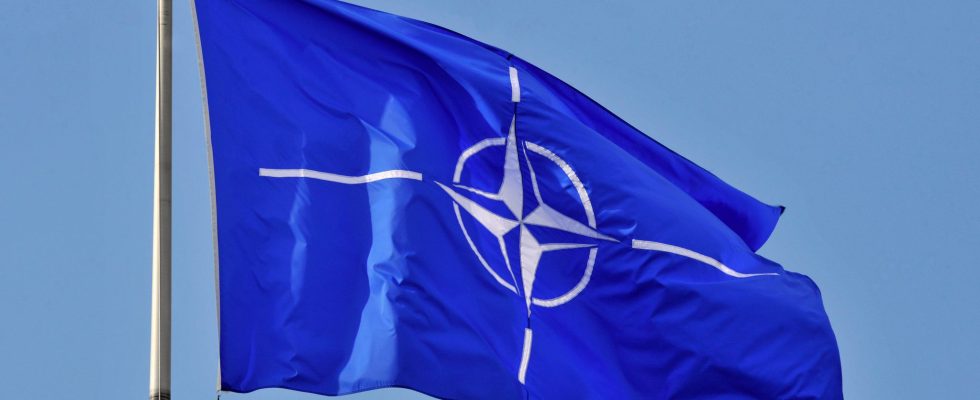This 2023 edition is unique. Saturday September 10, 13 member countries of the North Atlantic Treaty Organization (NATO) and Sweden began a large naval military exercise in the Baltic Sea. If such a program takes place every year, NATO nevertheless assumes this time an objective of preparation to defend this geographical area in the face of threats from Russia in Europe.
The operation, named “Northern Coasts 23”, and placed under German command, is scheduled to last two weeks, until September 23. Military training will take place mainly in the coastal waters of Estonia and Latvia, as well as in their land and air spaces.
An assumed reaction to the Russian threat
A demonstration of force which is not common for this military exercise. In previous years, NATO and its allies were mainly preparing to ward off attacks by pirates, terrorists and traffickers, or even with a view to participating in international missions.
This year, however, marks a turning point, assumes Fleet Admiral Stephan Haisch, head of operations. “For the first time since the start of these maneuvers in 2007”, the allied forces will confront “a realistic scenario within the framework of NATO defense”, explains the general.
This year, training was adapted to the consequences of the Russian invasion of Ukraine in February 2022. While Moscow justified this war by the risk of Kiev joining NATO, the conflict “radically changed the situation in terms of security in the Baltic Sea”, emphasized Saturday Dylan White, one of the spokespersons for the Alliance.
For NATO, this is about showing its ability to protect its members in the event of an attack by Russia. Fourteen countries are participating in this naval exercise: thirteen Member States (Germany, the United States, France, Italy, Finland, Estonia, Denmark, Canada, Belgium, Lithuania, Latvia , the Netherlands and Poland) which is joined by Sweden, which should soon join the group. With a clear message: “NATO is ready to defend every centimeter of the allies’ territory,” adds the Alliance in a press release.
Ensuring the protection of the Baltic countries bordering Russia
However, the choice to conduct this naval exercise in the Baltic Sea is not trivial. Indeed, these will be concentrated mainly near the coasts of Estonia and Latvia, two former countries of the Soviet Union now members of NATO but bordering Russia.
In detail, more than 3,200 soldiers, 30 ships and submarines, and up to 19 aircraft and various land units will train both in the defense of ports and in the amphibious attack of targets on land. With the main objective of securing maritime routes. “Finland and the Baltic countries depend almost 100% on maritime supply routes passing through the Baltic Sea”, underlines Vice-Admiral Jan Christian Kaack from the British press agency Reuters.
The need to protect these routes is also reinforced by the geographical location of the Baltic countries. The vice-admiral thus reminds Reuters the importance of the Suwałki Corridor, a land area designating the short 65 kilometer border between Poland and Lithuania, also bordered by the overarmed Russian enclave of Kaliningrad. For Jan Christian Kaack, a blockage of this small corridor would force NATO to depend on maritime routes to defend the Baltic countries and Finland.
The geopolitical context nevertheless calls for caution. Even if Russia itself regularly conducts military exercises in the Baltic, as recently in August, the “Northern Coasts 23” maneuvers will not take place near Kaliningrad in order to avoid any provocation, specifies the German navy.
A symbol of the break between Germany and Russia
If the NATO general staff does not expressly specify it, another major issue concerns the protection of the energy infrastructures of Western countries in the Baltic Sea. At the end of September 2022, the Nord Stream 1 and 2 submarine gas pipelines linking Russia to Germany were sabotaged, without the culprit being clearly identified.
A sabotage that forced Germany to question its own dependence on Russian gas. This is also the other symbol of this naval military exercise: the end of Germany’s relative neutrality within Europe. Although these “Northern Coasts” exercises were created at the initiative of Berlin in 2007, it is the first time that the German navy “plans and directs maneuvers of this order of magnitude”, according to Admiral Stephan Haisch.
One more sign of the affirmation of Germany’s military role in Europe, whose government announced that it would drastically increase the budget of its army in the aftermath of the Russian invasion. Symbol of this development: the 2023 naval exercise will be led from the new maritime command center in Rostock, in the north-east of Germany. A site that the country wishes to ultimately make available to NATO to “direct the alliance’s operations in the Baltic Sea in the event of conflict”, adds Reuters.
